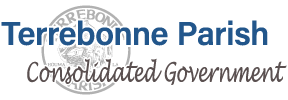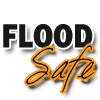
|
|
Recovery Assistance & Mitigation Planning
Recovery Planner Jennifer Gerbasi

Terrebonne Parish Department of Planning and Zoning Recovery Assistance and Mitigation Planning FloodSafe Minute Know Your Flood Risk. Stay Safe. 2020 has been a year of trials of all sorts including responses to five named storms and efforts to stem the Corona Virus. The virus required many of us to stay in our homes much more than usual and underscores that the family home is the safe refuge we have whenever we don’t need to evacuate. When we do need to evacuate, we all want to be able to come back to that comfortable and safe home that we were forced to leave for a short time. There are steps that we can all take to protect our homes and businesses from flooding hazards. Know your flood hazard – discover where your property is in relation to the floodplain To be prepared, you have to know the hazards that might increase risk of damage to a home or business. Knowing the hazard and level of risk is a great start. The Parish has been preparing as a community to build infrastructure to stop storm surge and pump out surge and rain to protect our assets, but no system is floodproof. Terrebonne Parish has many structures in what is called the Special Flood Hazard Area. This doesn’t mean structures outside this area will never flood, but structures in the Special Flood Hazard Area are considered to be at a higher risk. Anyone can look up a structure and see what FEMA believes to be the risk to that structure at this time. Visit http://maps.lsuagcenter.com/floodmaps/?FIPS=22109 or call 985-873-6567 to see if your property is in or near a flood hazard area. The Parish suggests looking at the layer that is called “DFIRM,” which is the first map that will show up when you put in the address to look for the property. It will provide the estimated ground level and the elevation that FEMA thinks will keep the structure out of flood waters. It provides some indication of the risk level of that structure. Insure your property for your flood hazard – even properties located outside of the floodplain should be insured for flood Flood insurance is just as important as homeowner’s insurance. Homeowner’s insurance will pay for water damage from a roof, but will not pay for a flood, which is rising water from an external source. Approximately 25% of flood claims are from owners of properties located outside of the floodplain. Those properties should be insured for flood so that they can be repaired and elevated if necessary. Flood insurance benefits can provide up to $30,000 to elevate a structure if it has flooded badly or repeatedly. Terrebonne Parish participates in the National Flood Insurance Program (NFIP), so flood insurance is available to everyone. On the same map referenced above, you can look at the FIRM layer, which will give the current height required for the standard flood insurance rates. If the home or business is above those levels and in the Special Flood Hazard Area, you might get a discount of up to 62%. All structures in the SFHA that have a mortgage are required to have flood insurance. Contact a flood insurance agent to ask about flood insurance today! Protect people from the hazard – turn around don’t drown If you see floodwater on roads, walkways, bridges, or on the ground, do not to attempt to cross. The depth of the water is not always obvious and water can hide damage or dangerous debris. Be aware of areas where floodwaters have receded and watch out for debris. Do not drive through floodwater. Turn around, don't drown. Protect your property from the hazard – retrofit your home or business to help protect from flooding. It is never too early to have a plan and prepare for an event. Protect your family and property with a plan. If it may flood, prepare your home. Have an evacuation plan: make a list of emergency numbers, identify a safe place to go, and know your evacuation route. Stock up on food, medications, and a way to have clean water in case you need to leave, or come home without all the stores being available. Visit Terrebonne Parish Office of Homeland Security and Emergency Preparedness website at tohsep.com for more information. Build responsibly – retrofit homes or businesses in flood zones, do not build in the floodway. Build responsibly – retrofit homes or businesses in flood zones, do not build in the floodway. It is important to build with the best available data in mind. Before even starting to design a new building, check with an insurance professional or the LSU Ag Center maps to see what the flood conditions might be or contact the parish Floodplain Administrator at 985-873-6567 for that information. The permits office can advise builders and designers of the floodplain regulations and provide advice that can increase the safety of the home, avoid costly retrofitting for compliance, and lead to savings on flood insurance. All development in the Special Flood Hazard Area requires a permit. High-hazard V zones and coastal A zones have stricter compliance requirements. Build to the best available knowledge rather than just to the regulatory standard in order to be safe from flooding now and in the future. Consider building an Acadian style house or on a chain wall rather than a slab that leaves little room for change and exposes the slab to tree roots and subsidence. For information on safe building, call the Terrebonne Parish Permit Office at (985) 873-6567. Protect natural floodplain functions – keep ditches and culverts clear of debris. Take care of the natural floodplain. The wetlands we have naturally hold water as do the trees, shrubs and marsh grasses that make up the natural conditions in Terrebonne Parish. This great natural diversity is what is home to our great variety of species and makes us the Sportsman’s Paradise. If possible, keep the trees, avoid filling in low spots in a yard where the water can pool and regenerate our groundwater, and keep anything that could clog the storm drains tied down. NEVER blow yard waste into the storm drain, or allow leaves and dirt to clog the grates. There are many ways to protect natural floodplain functions, including: keeping areas of the floodplain in their natural state, preventing dumping in the floodplain, preserving natural drainage, controlling runoff, protecting wildlife habitats, and requiring erosion control in new development. Dumping in the floodplain can clog the drainage system. Call the Terrebonne Parish Solid Waste Division at (985) 873-6761 if you see illegal dumping.
Related InformationKnow your Flood Risk Original Document |
NewsContact
Hours of Operation
Physical Address
Mailing Address
|
Resources
|
|
Connect
|
|
©2024 Terrebonne Parish Consolidated Government
0 |
